What Is a Solar Power Generating System? | Complete Guide
Solar photovoltaic (PV)cells / modules generate electricity from sunlight, which can be fed into the mains electricity supply of a home/industry/building or sold to the public distribution company connected to the grid. This will Reduce the need for generation through fossil fuel technology. More and more solar energy systems on roof top will help create jobs, enabling home/industry/building to save money, and cut greenhouse emissions/ pollution.
PV modules use semiconductor materials (usually silicon) to generate DC electricity from sunlight. A large area is needed to collect as much sunlight as possible, so the semiconductor is either made into thin, flat, crystalline cells, or deposited as a very thin continuous layer onto a support material, usually glass. The cells are wired together and sealed into a weather proof module, with electrical connectors added. Modern modules for grid connection usually have between 48 and 72 cells and produce dc voltages of typically 25 to 40 volts, with a rated output of between 150 and 300 Wp solar panels . Then these panels are combined to give a certain voltage and current to be fed to an inverter which will then convert DC to AC electricity to be further used for energy/power needs of a home/industry/commercial building.
Grid-tied PV systems for producing/generating electricity are installed on the rooftop or ground in or around a building. This can also be taken up at a land that could’nt be used for other purposes like agriculture. Ideally the PV faces towards the equator and the exact direction is critical otherwise there is loss of production of solar energy. However, it is important to make sure that there is minimal shading of the PV. If the PV electricity production exceeds building demand then the excess can be exported to the grid, and vice versa. With net metering being permitted by govt in almost all states , clients are billed on net of export and import of electricity.
A typical grid connected system rated at 1 kWp requires an area of about 10 m2. However if the roof is slanted tin shed ( mostly industries have slanted roof of tin shed)and south facing then the area required reduces to 7 sq mts.
Suggested Articles
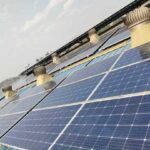
How DISCOMs Implement Net Metering for Solar Power Plants
Discover the process of net metering implementation by DISCOMs for solar power plants. Understand the benefits, billing mechanism, and how it maximizes solar energy utilization.
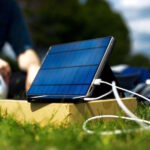
Solar Energy Gadgets in India: 9 Cool Devices to Explore
Explore 9 innovative solar-powered gadgets in India that make daily life more sustainable, energy-efficient, and eco-friendly.
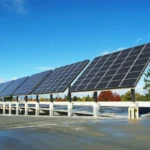
Guide to Selecting Right Solar Panels for Your Home or Factory
Solar panels are a hot topic these days, as the cost of solar is finally approaching what the average family can afford.
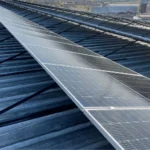
UPNEDA Solar Subsidy 2025: How to Maximize Savings on Rooftop Solar
Discover how the UPNEDA Solar Subsidy 2025 can help you cut electricity costs and make rooftop solar more affordable. Learn about eligibility, subsidy rates, and the step-by-step application process.
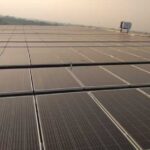
Yes, I Have Installed an Optimized Solar PV Rooftop System at My Premises
A solar power generating system converts sunlight into electricity for residential, industrial, and commercial use. This blog explains the components, working, and benefits of solar systems, helping you understand how to harness solar energy efficiently and sustainably.
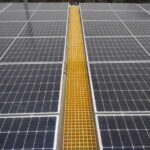
Solar Rooftop: अपने घर को बनाओ खुद का पावर हाउस | Complete Guide
सौर रूफटॉप सिस्टम आपके घर को पावर हाउस बना सकता है। यह न केवल बिजली के बिलों में बचत करता है, बल्कि साफ और नवीकरणीय ऊर्जा भी प्रदान करता है। जानें सौर पैनल की इंस्टालेशन प्रक्रिया, लागत, लाभ और कैसे यह आपके घर को आत्मनिर्भर ऊर्जा का स्रोत बना सकता है।

Case Study: Successful Design, Installation, and Commissioning of a 50 kWp Rooftop Solar PV Plant
This case study details our experience in designing, installing, and commissioning a 50 kWp solar PV rooftop power plant. Learn how we overcame technical challenges, optimized system performance, and delivered clean, reliable energy. Discover insights on panel selection, inverter sizing, monitoring, and commissioning processes that ensured maximum efficiency and long-term performance for the rooftop solar installation.
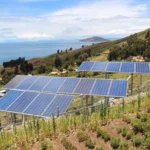
Save on Electricity in Haryana Using Net Metering: Complete Guide
Learn how to save on electricity in Haryana with net metering. Step-by-step guide on benefits, installation, and cost savings for your home or business
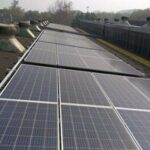
Benefits of Solar Energy: Why Switching to Solar Makes Sense
Switching to solar energy offers numerous benefits, from lowering electricity bills to reducing your carbon footprint. This guide explores how solar power supports sustainable living, provides cost savings, and creates a cleaner environment for homes, businesses, and industries. Learn why adopting solar energy is not just smart, but essential for a greener future.
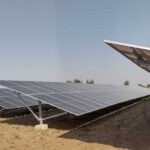
Financing made easy for the Rooftop Solar Projects
Solar roof top is expected to get a big push with the new…